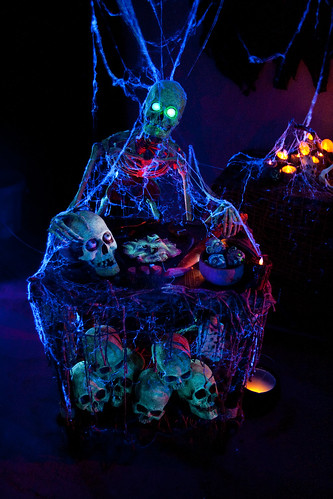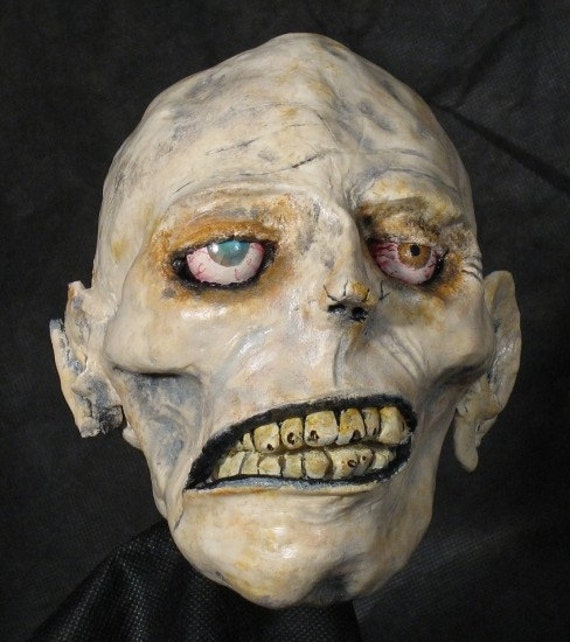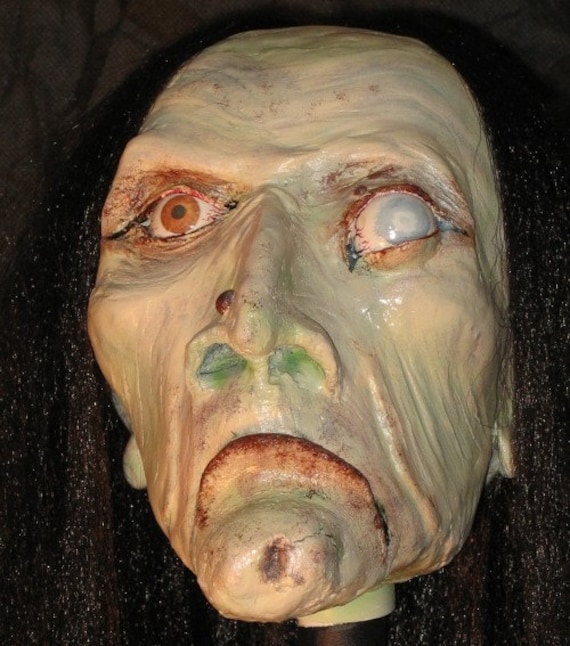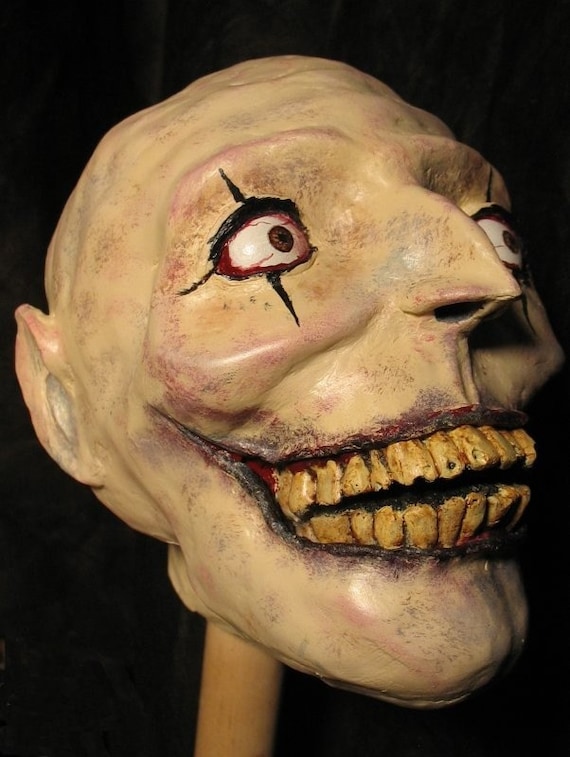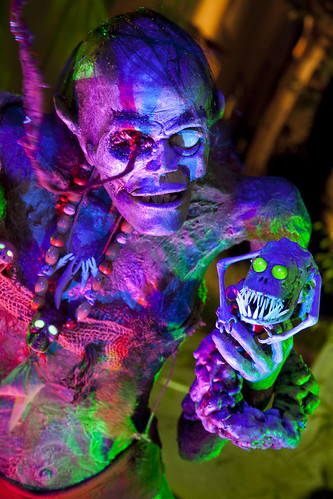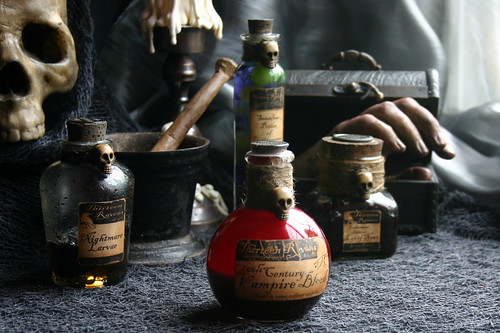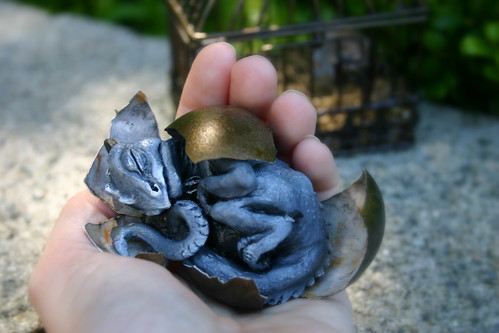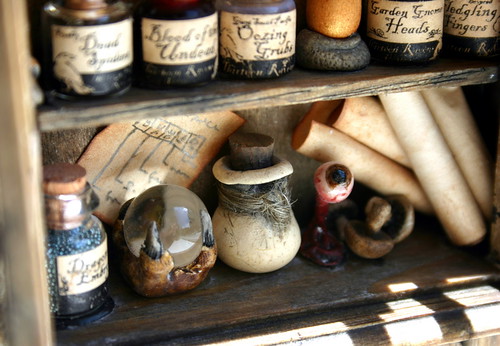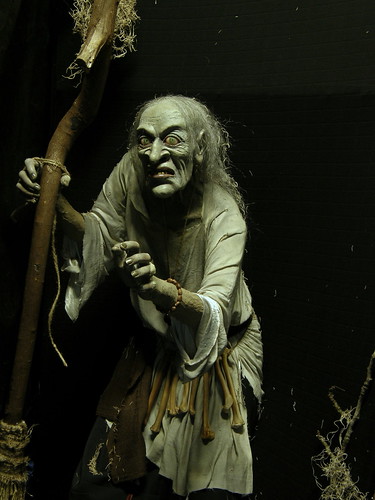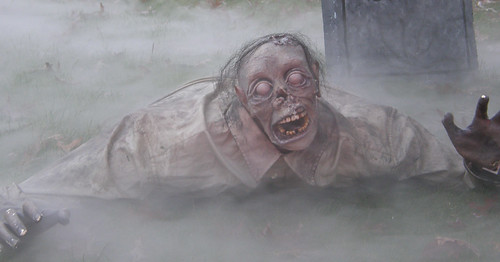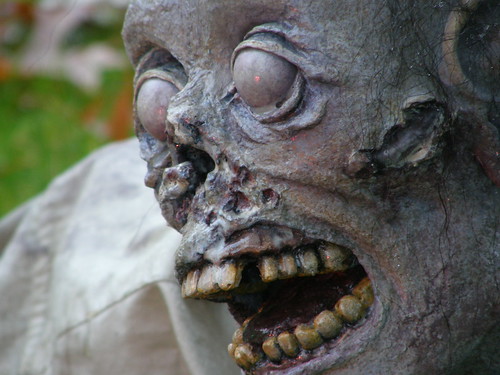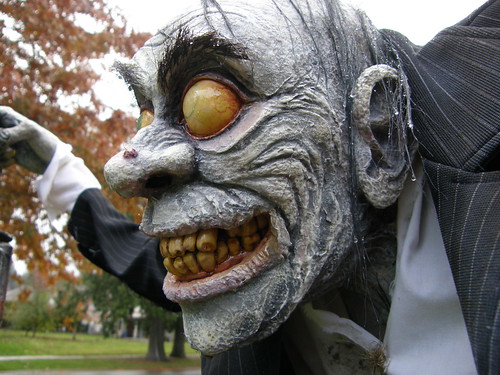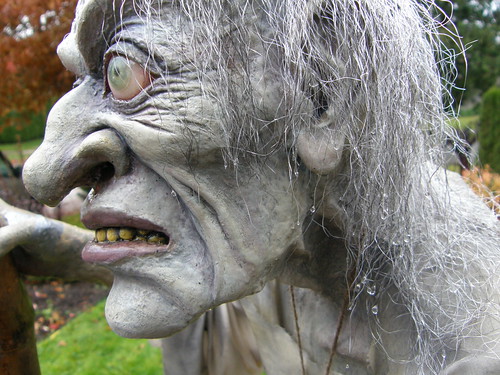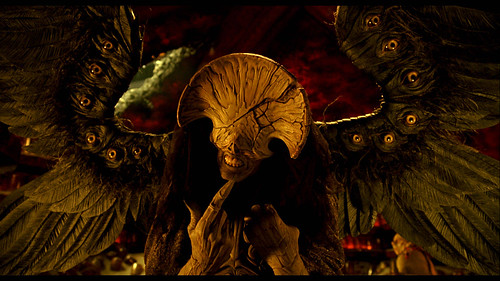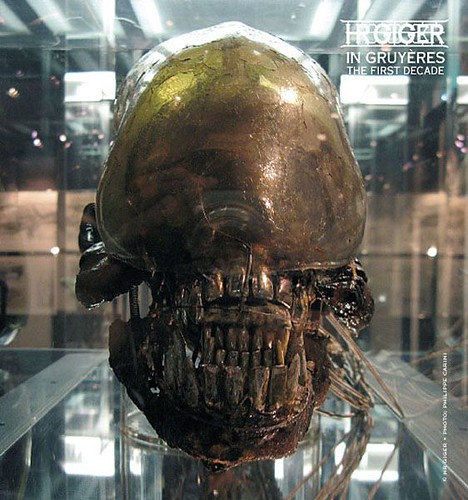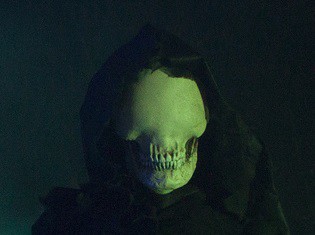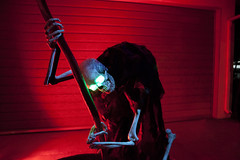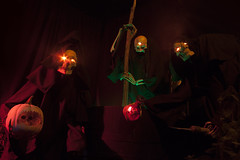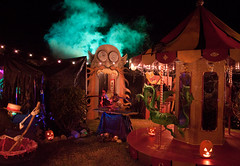The Frame
The frame is based of measurements from a Bucky 4th quality skeleton. Why is it important to mention it is 4th quality? 4th quality means you will have warped bones, poorly installed hardware, and who knows what else and this make them all kinda of unique in a way the would infuriate an engineer. So use the measurements for the legs and arm as guidelines, maybe add and inch or two for good measure then cut down as you fit the bones to the frame. (fitting bones to the frames will be in another post).
It's hard to see the details here so make sure to download the Cauldron Creep 3.0 How-To PDF.
The How-to is being updated as new sections are added, such as how to wire the led eyes, make costume, attach bones, etc. The link to the latest PDF of the How-To can be found here.
So here is an overview of what a cauldron creep looks like naked:
Neck Motor Mechanism
These plans are based on my current cauldron creeps version 2.0 and 3.0. Since I first made the Cauldron Creep in 2008 a few things have changed.
Firstly, the once cheap and widely available 6rpm window crank motors have become rare and pricey (up to $50). There is a substitute motor listed in the how-to parts list. This is a small geared motor that runs off of AC current. I have heard you can find DC current version of it, and if you can I recommend it. DC is much friendlier to beginners and hobbyist because the voltage are rarely high enough to be dangerous.
Secondly, the mechanism now is more compact and requires less bar stock (which is pricey). It is also easier to make and assemble. It doesn't require as large a back hump to operate.
The wood block is used as a mounting base for the motor as the mounting points on the motor didn't allow it to be aligned the frame centerline if mounted to the PVC pipe. It also creates a stand off which helps get the motor more to the center. Depending on what motor you end up using and the fittings associated with it you be able to figure out your own stand off and alignment needs.
You'll also see I used a 4 inch KO Test plug as part of the mechanism. I used it thinking it would reduce snagging or pinching. I recommend using a 2.5" to 3" piece of bars tock with one hole drilled and tapped if possible where the motor connects. Make sure the rotation of the motor tightens the threads as it turns. If you can't reverse the motor you'll have to mount it on the opposite side so it that it tightens threads instead of loosening them as it turns.
Here is a preview of what you'll find in the PDF.
This is a schematic of the neck motor assembly:
And the exploded view:
And the side view or the neck mechanism:
And finally a close up of the neck mechanism details:
















